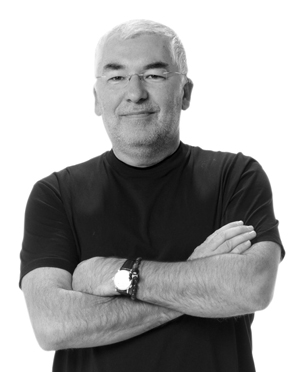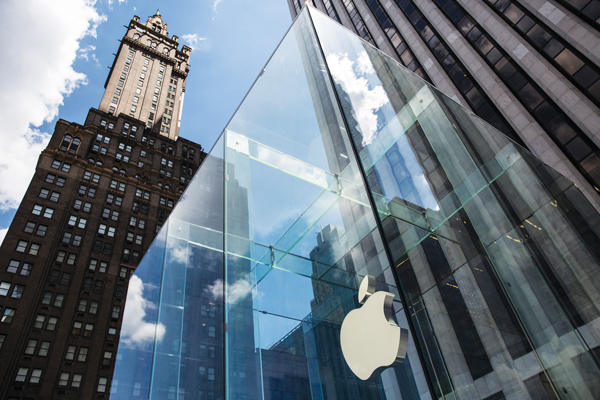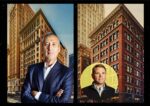Trending
The designed outcome
Tim Kobe’s Eight Inc. has created stores for some of the world’s most iconic brands, including Nike, Apple and Citibank

Tim Kobe, founder and CEO of strategic design firm Eight Inc., works with some of the largest brands in the world — Apple, Virgin Atlantic, Citibank and Nike, just to name a few.
From the firm’s eight international offices, he and his team have designed some of the most recognizable retail experiences, including the Apple stores from their earliest incarnations. The firm, founded in 1989, says it prides itself on putting the human connection at the forefront of design.
That connection is of particular importance as Eight Inc. works to keep ahead of the challenges facing traditional retailers — most notably, e-commerce.
Even Amazon hasn’t solved the challenges that come with a lack of physical proximity of people to products, he noted. “That’s something that gives existing retailers and shopping centers a clear and huge competitive advantage over Amazon.”
Kobe sees more retailers combining online sales with well-placed physical locations in the future. Brands with the best feedback systems and “receptors” to measure what’s working — and what’s not — will have an edge, he said.
The Real Deal spoke recently with Kobe — who divides his time between San Francisco and Singapore —while he was in Shanghai.
How would you describe your philosophy of retail design? The first aspect is really recognizing that all design is about some type of outcome. In retail one of the outcomes people are looking for is a transaction. We’ve been successful in recognizing the most successful brands have focused on relationships, rather than transactions. You have to be able to communicate the values the company stands for and design that into the experience people have with the brand. The Apple retail program has been largely successful because it has established a key touch point with the brand where people can go and feel they are part of the value systems Steve Jobs and Apple have stood for.
Of all of the retail experiences you have designed, which ones have been the most challenging to you? And how did you resolve those challenges? The most challenging ones are the ones where we are working with extremely large, complex organizations. When you look at large-scale businesses, they are typically much harder to deploy strategic initiatives within. When you look at companies and their ability to change and to have the ability to think about change within their organization, that is probably one of the hardest things for companies to do.

Apple store on 5th Avenue
Certain categories have been challenging. We were recently involved in launching the Lincoln brand into China. Being the last one in the market meant the solution had to be something very distinctive. It launched in 2014 and broke records for the most cars sold in a month in the history of the company. In 2016 they were rated the number three luxury brand in China behind Audi and BMW. We restructured the experience around a hospitality type of environment.
In China, people often buy cars in groups — they bring their families, and for a first-time luxury car, even grandparents are brought along. We created small pavilions where people would wait and one or two people in the party would do the test drive. It was a completely new behavior model.
We ended up creating the Lincoln Institute, a training facility to teach the Lincoln way. One of the requirements was, you couldn’t hire people who worked previously in auto sales. It would modify the culture. It was a really different way of thinking. Now we’re working with Jaguar Land Rover doing their global program.
How do you and your team take e-commerce into account when designing retail experiences? There’s been too much of a preoccupation between the physical and digital touch points. Our point of view is, the experience is consistent across any of those touch points. Where you see the most lift and sales conversations is when people engage in physical and digital space. The idea that those are two polar opposites is kind of an old-fashioned idea.
The notion that e-commerce is eroding some of the competitive environment for certain products in certain markets is certainly the case. That is because existing shopping center owners and existing retailers haven’t really risen to the challenge. They’ve been pretty narrowly focused in terms of their own interests, rather than looking at a competitive model.
You work with many iconic brands. How do you ensure that each has a unique presence that continues to evolve? Self-awareness is an important starting point. Not every one of those companies is that self-aware. In order to do well over time, you have to have that self-awareness. Unless you’re critical of yourself, something is wrong. Steve [Jobs] was probably one of the most critical people of Apple. I think it’s fair to be self-aware and to be critical of things that are working and things that aren’t.
Today Eight Inc. has more than 170 strategic designers and business creatives across 12 studios around the world. How do you nurture the spirit of innovation on your team? We started out with people who didn’t fit easily into the vertical that many professionals get stuck in. We ended up hiring people who had a pretty diverse set of interests. We were able to leverage the diversity of interests and experience with people who came to the company early on.
We’ve been lucky to see that when we put people like this together, the types of ideas and things that come out are somewhat odd. We used to pride ourselves that we only hired people who were sort of the misfits. It can be a bit dramatic at times, but it creates the most interesting work.
What are the retail trends that interest you most? It’s trends in human behavior we are most interested in: What people are doing and how they are interacting will shape the types of decisions we make in design about creating relevant experiences. It’s a combination of things you’re creating and the dialogue you’re having with the people connecting with those things. You’re always sort of recalibrating. If you’re not listening and aware, it’s really hard to be relevant. As the retail business becomes more competitive, that’s where the winners will be. The ones who are challenged will be the ones who haven’t been able to develop that conversation.
What will the retail experience of the future be like? Ultimately brands will start to evolve and become more influenced by local qualities and still possess those qualities that make the brand appealing at a broader level. If they are a brand that is targeting global citizens, they have to understand that to visit their retail space in San Francisco will be different from a retail space in Istanbul or London.
Aesop is a brand I really admire. They have avoided the formulaic approach to how they design the experience for their stores. The stores are relatively small and relatively low-cost, but when you go there, there is something wonderful about discovering what the new space is like. They are using that to their advantage.
This interview has been edited and condensed for clarity.




